Housing is Everyone's Concern!
good reads
Books
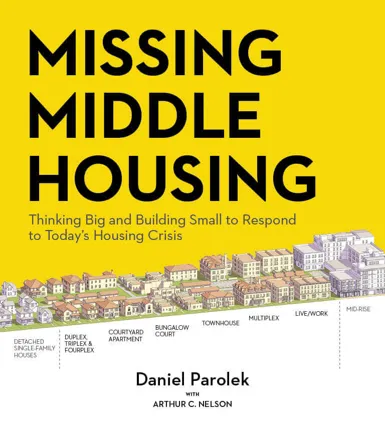
In Missing Middle Housing, Parolek, an architect and urban designer, illustrates the power of these housing types to meet today’s diverse housing needs. With the benefit of beautiful full-color graphics, Parolek goes into depth about the benefits and qualities of Missing Middle Housing. The book demonstrates why more developers should be building Missing Middle Housing and defines the barriers cities need to remove to enable it to be built.
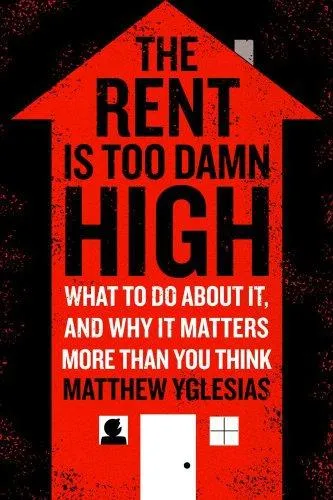
Rent is an issue that affects nearly everyone. High rent is a problem for all of us, extending beyond personal financial strain. High rent drags on our country’s overall rate of economic growth, damages the environment, and promotes long commutes, traffic jams, misery, and smog. Yet instead of a serious focus on the issue, America’s cities feature niche conversations about the availability of “affordable housing” for poor people. Yglesias’s book changes the conversation for the first time, presenting newfound context for the issue and real-time, practical solutions for the problem.
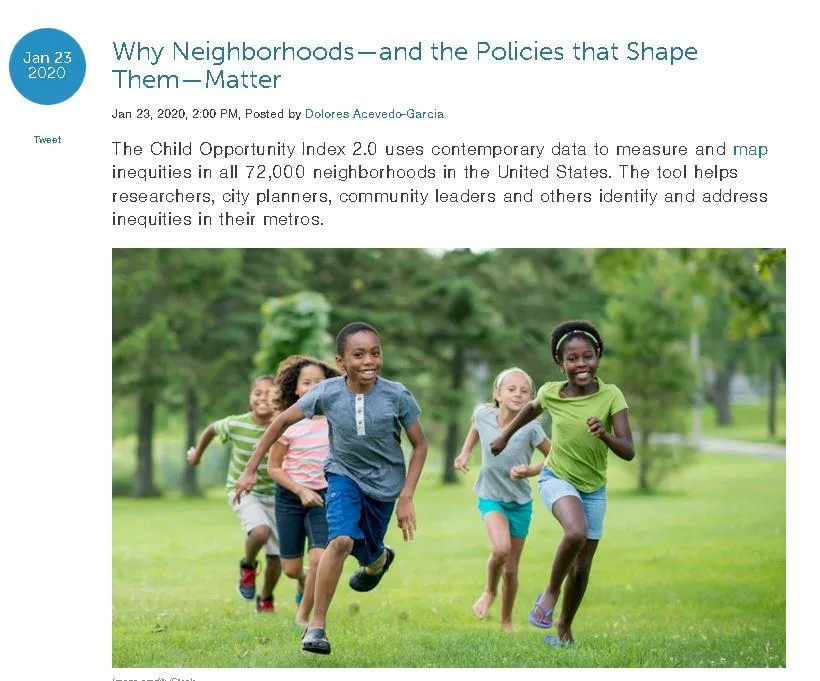
From prominent political thinker and widely followed Slate columnist, a polemic on high rents and housing costs—and how these costs are hollowing out communities, thwarting economic development, and rendering personal success and fulfillment increasingly difficult to achieve.
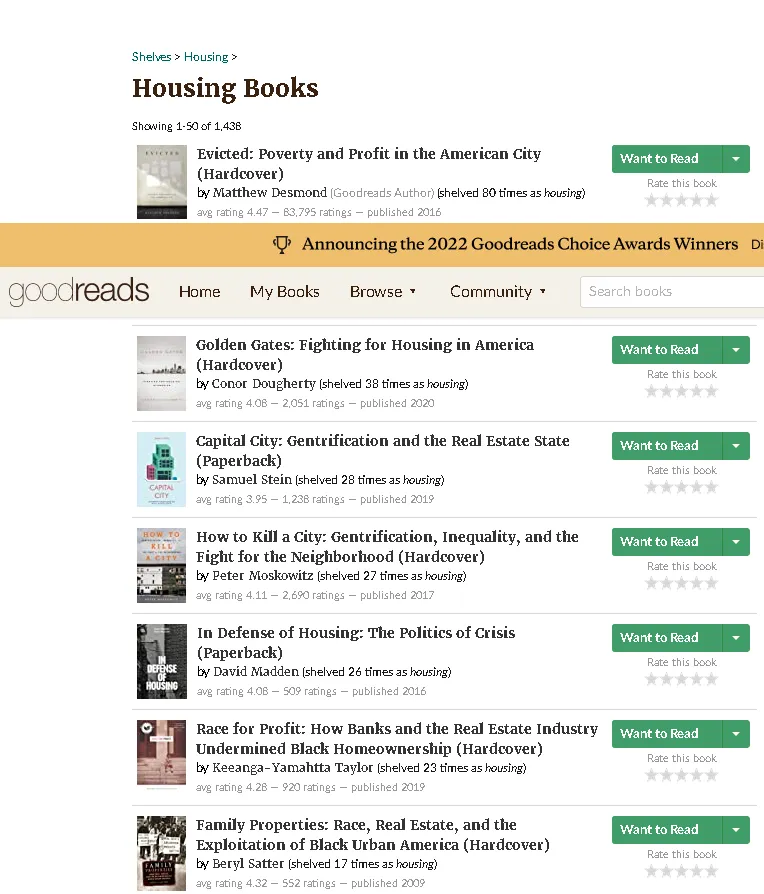
To understand why we are in a affordable housing crisis, one needs to learn the history of how we got here and consider some suggested solutions to move forward.
Articles
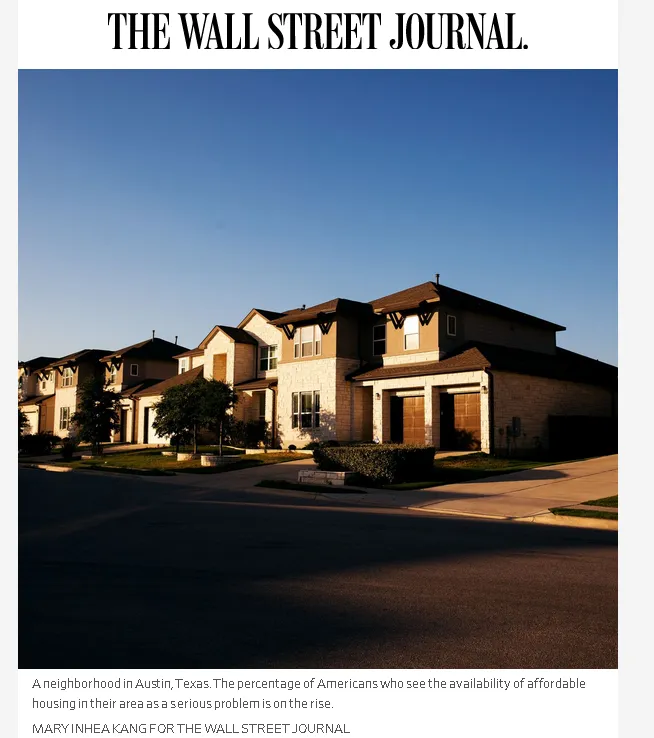
Recent volatility in home prices and rents has been a long time coming. Fixing it will require abandoning outdated policy frameworks.

This webpage provides reading list that was curated by YIMBY Action with the goal of growing awareness of the pro-housing movement. If you are new to the movement, these books are a helpful resource to help you learn more about the history of housing in the U.S. and gain some insights from experts on solutions to the housing crisis we are seeing throughout the country.
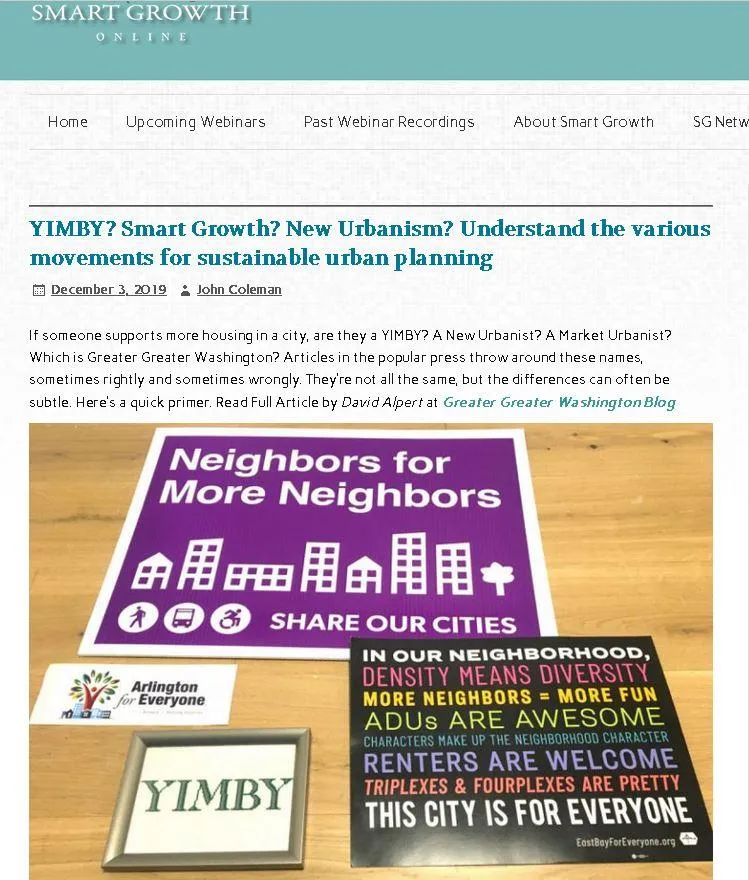
If someone supports more housing in a city, are they a YIMBY? A New Urbanist? A Market Urbanist? Which is Greater Greater Washington? Articles in the popular press throw around these names, sometimes rightly and sometimes wrongly. They’re not all the same, but the differences can often be subtle. Here’s a quick primer.
Podcasts
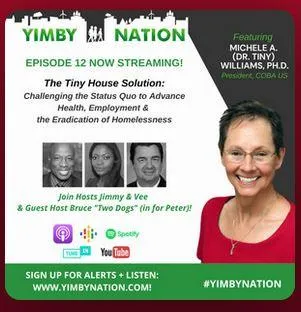
Bringing about positive public policy change requires knowledge, insight, and above all, commitment. Our guest today, Michele "Dr. Tiny" Williams, has had a varied career that spans the military, real estate, and public policy. While conducting research for her recent Ph.D. in Public Policy, she examined the relationship between health and housing, the results of which had a huge impact on the latter half of her career. After realizing the substantial role that geography played in health outcomes, Michele recognized that your zip code shouldn’t determine your lifespan. Her experience during a bike adventure that involved helping communities fix their homes further catalyzed Michele to become involved in housing and public policy. Since then, she has made it her mission to transform public housing and address the systemic inefficiencies that are putting countless people in a position where they face homelessness or risk making dire compromises.

Being the Chief Visionary at COBA US Inc., she has shifted her efforts towards helping others in need by finding affordable and appropriate housing. She does this by working with a team who turns dirt, land, and empty lots into homes for renting or selling.
"Connect – Organize – Build – Advance" is her motto, and with it, she and her team have helped countless individuals and organizations in the Delaware area.
Michele ‘Dr. Tiny’ Williams is the Chief Visionary of COBA US Inc.
This podcast is powered by DenTen Insurance - Insurance for the Greater Good. www.denten.io
To listen to more and be inspired, visit www.michaelespositoinc.com

A short podcast in which Sonja Trauss, one of the founders of YIMBY, tells the story of how it got started.
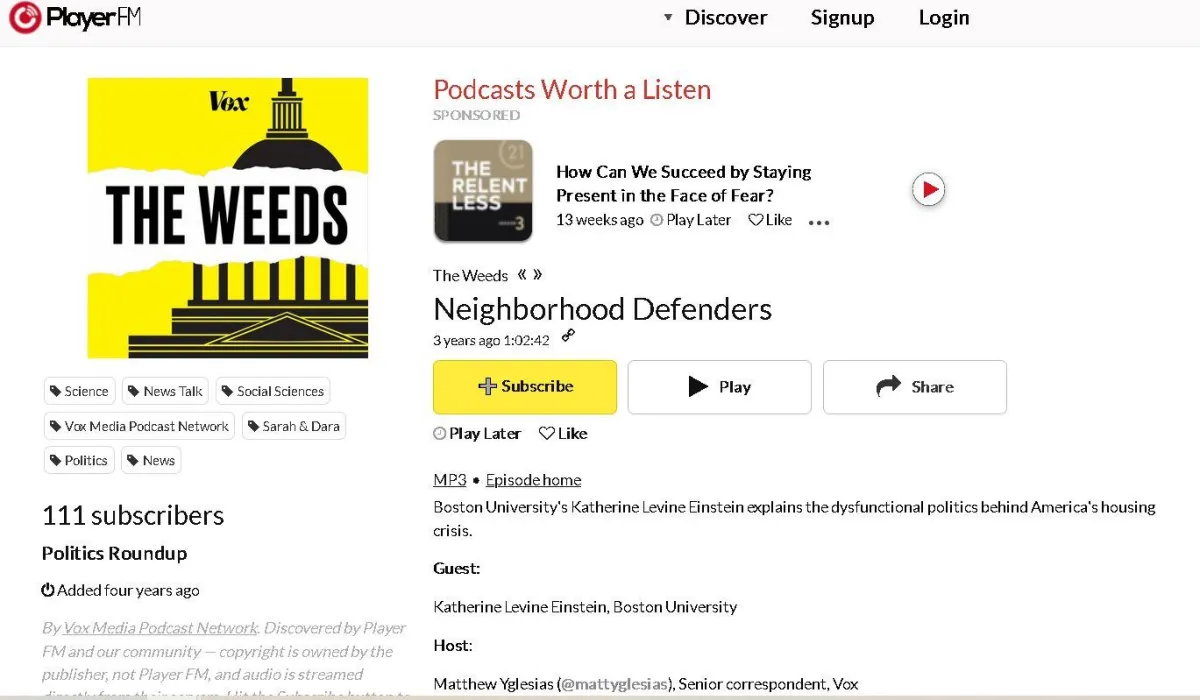
Katherine Einstein, Professor of Political Science at Boston University, discusses how community members who oppose housing gained so much power with podcast host Matt Yglesias. They also talk about efforts to fix this dynamic, challenges, and possible solutions. Neighborhood Defenders is the term that Einstein uses for opponents of housing, instead of NIMBYs.
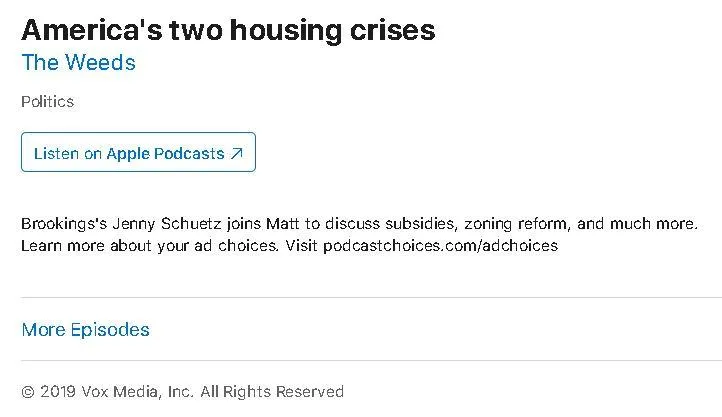
Matt Yglesias interviews Jenny Schuetz, a housing economist at Brookings Institute, about housing affordability. Dr. Schuetz identifies two distinct issues, requiring different solutions. The first issue is that low-income families across America don’t earn enough to afford housing. Dr. Schuetz advocates an entitlement that provides housing subsidies for these families. Separately, a small number of metro areas have not built sufficient housing. This has driven up the housing costs, making housing unaffordable even for many households. Housing subsidies will not help affordability in these markets. Dr Schuetz advises zoning changes, likely driven by state and Federal governments.
Videos
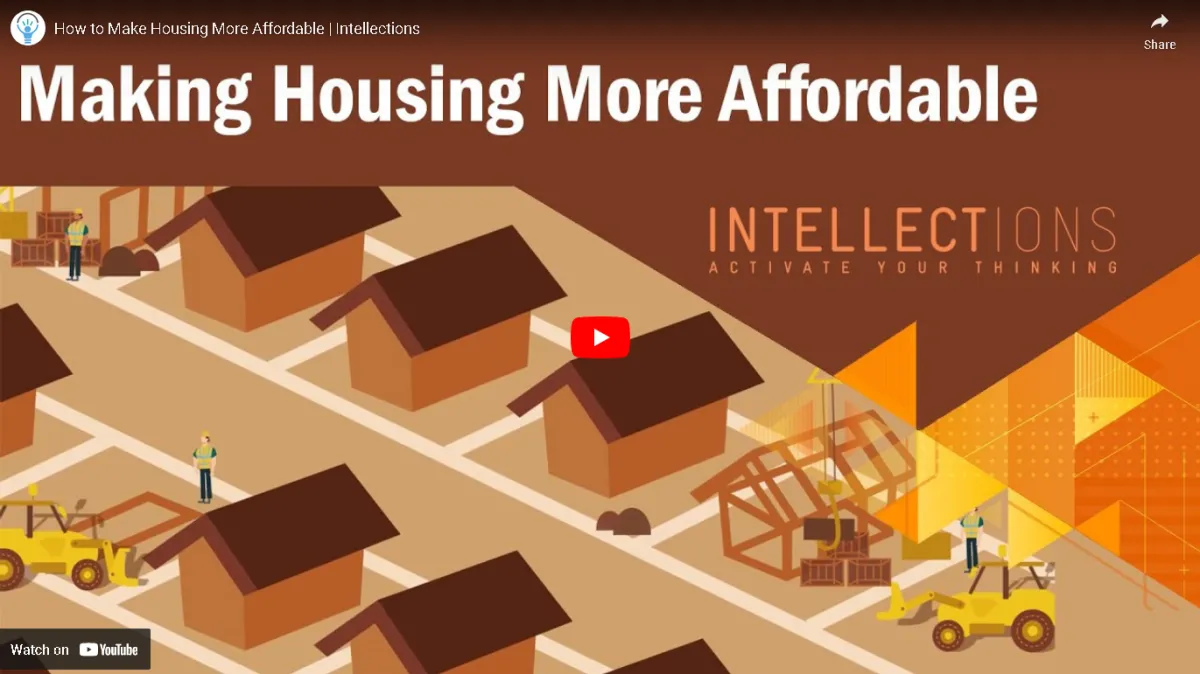
What makes housing expensive? The problem isn’t lack of space—it is that not enough homes are being built. Housing can be made more affordable by reducing regulations and restrictions on building houses and allowing non-homeowners more of a say in how their community will look.

How do we make housing more affordable housing? This video explains the two types of affordable housing and the stakeholders that must work together to create or maintain affordable housing units. Learn more about how why housing is unaffordable, how affordable housing is financed, funded, and built, and other issues
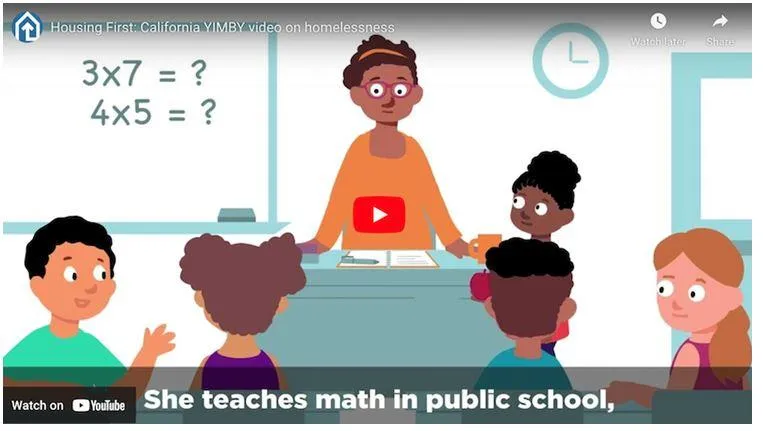
Although the short explainer video discusses California, the same issues apply in Delaware and across the US. Did you know that Houston, Texas has managed to cut homelessness in half over the past decade and house more than 25,000 people—all while spending less, on a per-person basis, than cities like San Francisco.
Houston's secret: abundant, low-cost housing.
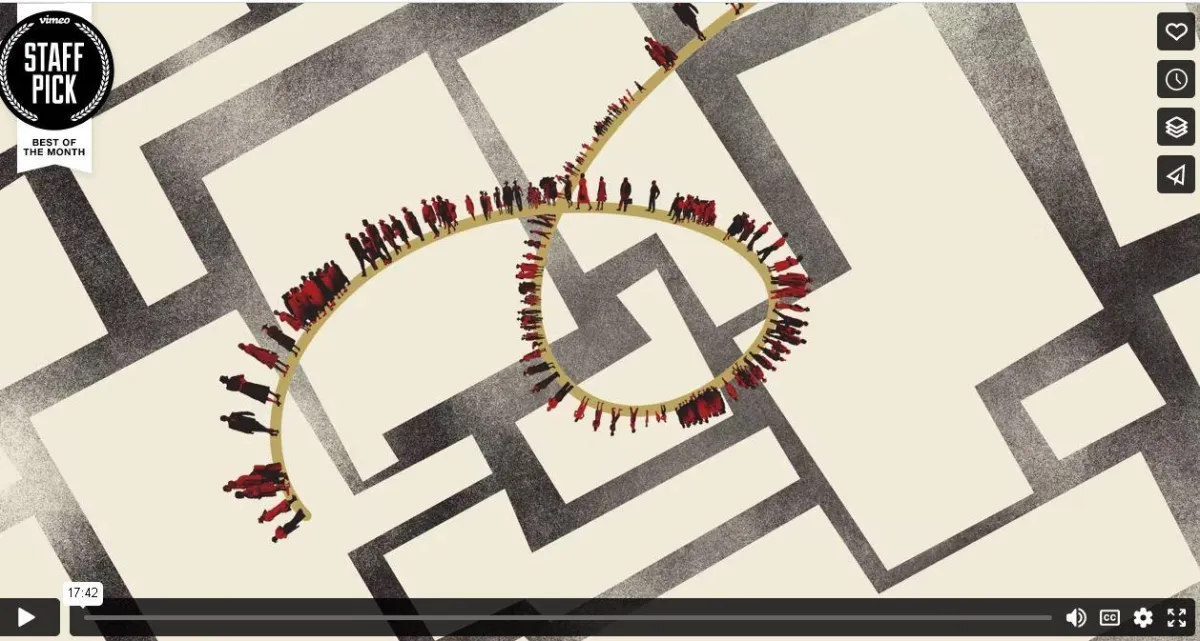
Examine the forgotten history of how our federal, state and local governments unconstitutionally segregated every major
metropolitan area in America through law and policy.
Directed by Mark Lopez
Written by Mark Lopez & Richard Rothstein
Narrated by Richard Rothstein
Designed & Animated by Mark Lopez
Music, Sound Design & Mix by YouTooCanWoo
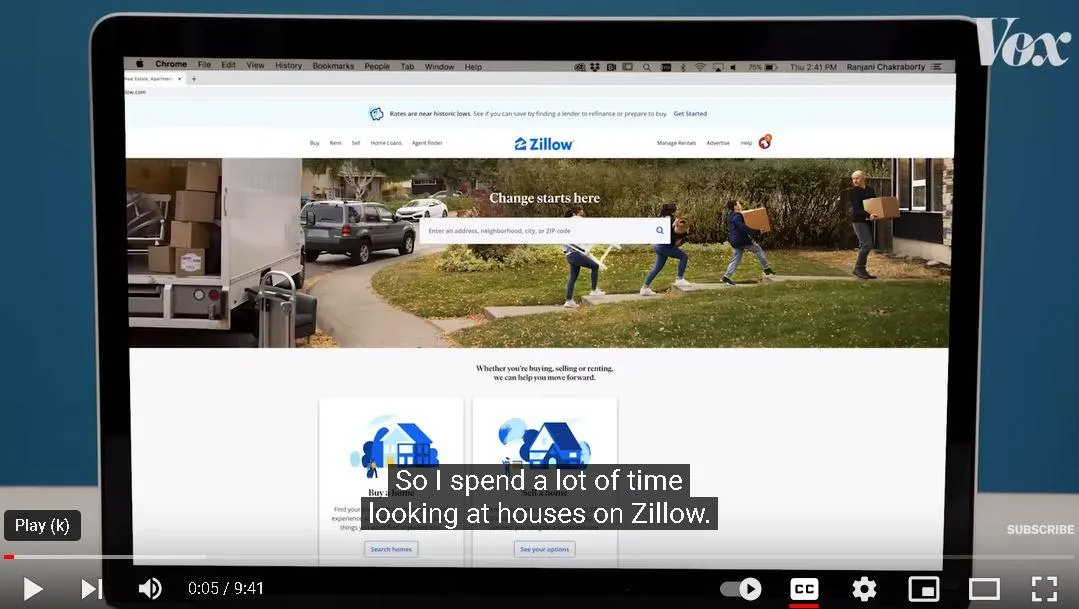
This video explains how laws about what can be built where drive rising home prices. There is a shortage of smaller homes and homes near schools, jobs, and other services. Zoning laws contribute to the shortage because they make it illegal to build multiple homes (e.g., a duplex or apartments) on existing lots. It notes how federal action could help counter neighborhoods' tendency to oppose changing zoning laws.
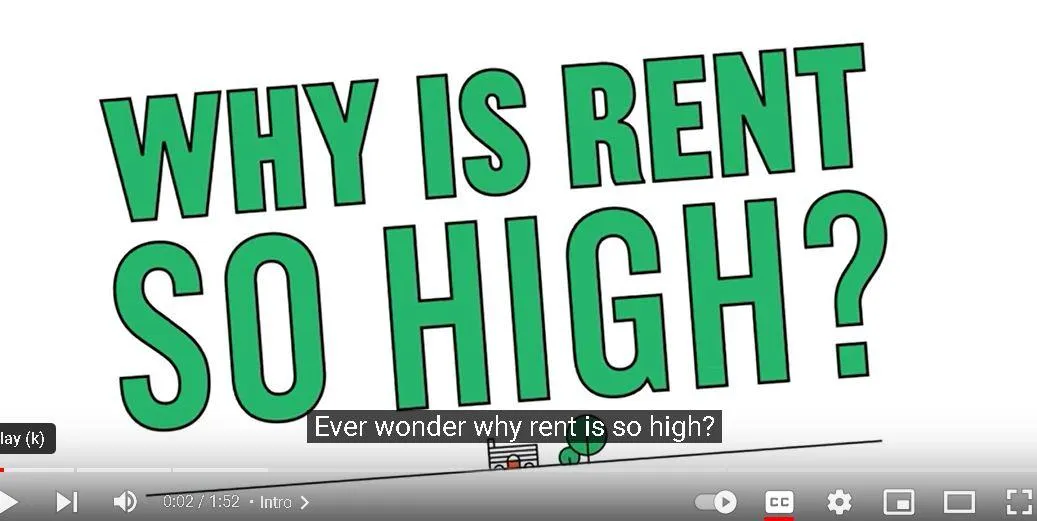
This short, animated video provides a demonstration of the impact of the housing shortage. It compares housing to a game of musical chairs. A lack of housing means that some families will not be unable to obtain housing, and will increase costs overall. The solution is to create more housing.
yimby toolbox
toolbox things
faqs
What is a NIMBY?
NIMBYism is best understood as a rational response to the risk of uncontrollable change to one’s neighborhood, which can have both economic and emotional consequences.
--This might be an economic impact on the value of one’s property (for home owners), or (for renters) one’s ability to continue to afford to live in a neighborhood;
--It might have an emotional impact on memories of home and a sense of place;
--It might create uncertain risks on the ability of local schools or roads to cope; and
--If change is uncertain, then no change is often more certain and more controllable.
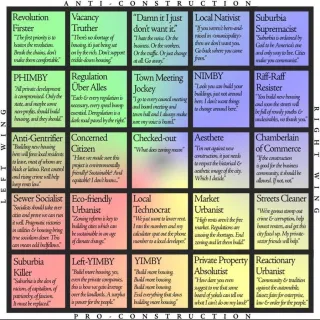
Do we have enough homes?
No. Between 2020 and 2050, Sussex County is forecasted to need 17,597 new household units.
A good article is Overcoming the Nation's Daunting Housing Supply Shortage.

How do housing challenges affect everyone?
According to the National Low Income Housing Coalition (NLIHC), Housing is the key to reducing intergenerational poverty and increasing economic mobility. Research shows that increasing access to affordable housing is the most cost-effective strategy for reducing childhood poverty and increasing economic mobility in the United States. Stanford economist Raj Chetty found that children who moved to lower poverty neighborhoods saw their earnings as adults increase by approximately 31%, an increased likelihood of living in better neighborhoods as adults, and a lowered likelihood of becoming a single parent. Moreover, children living in stable, affordable homes are more likely to thrive in school and have greater opportunities to learn inside and outside the classroom.
Increasing access to affordable housing bolsters economic growth. Research shows that the shortage of affordable housing costs the American economy about $2 trillion a year in lower wages and productivity. Without affordable housing, families have constrained opportunities to increase earnings, causing slower GDP growth. In fact, researchers estimate that the growth in GDP between 1964 and 2009 would have been 13.5% higher if families had better access to affordable housing. This would have led to a $1.7 trillion increase in income, or $8,775 in additional wages per worker. Moreover, each dollar invested in affordable housing boosts local economies by leveraging public and private resources to generate income—including resident earnings and additional local tax revenue—and supports job creation and retention.

What is zoning and how does it contribute to the housing crisis?
Zoning was first established in cities for health reasons and to separate housing from polluting industrial areas. However, over time, restrictions on height, number of homes per lot, lot sizes, and other parcel and city features now make it difficult to build housing that is affordable where it is most needed. The vast majority of residentially zoned land in Sussex County can only have a single family home on it, prohibiting missing middle housing options.
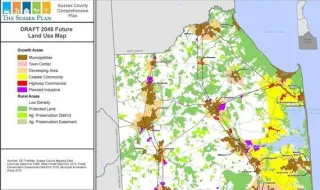
How does the housing approval process contribute to the housing crisis?
To build a home, developers must go through several stages of discretionary review, which may include Planning & Zoning Commissions and Councils. Click here for the Building Permit Process for Sussex County, but each municipality may have its own process. The image to the right provides the basic process. Although there are rules in place, these bodies may subjectively decide whether or not to allow the project to proceed, even if the developer follows all the written rules.
Each stage of discretionary review is an opportunity for opponents of new housing ("NIMBYs" for "Not In My Back Yard") to speak against a project. These opponents are often unrepresentative of their communities. This uncertainty often kills projects, and even when a project makes it through, these discretionary steps have often added months or years to the process, delaying the time until new residents can be housed and adding to the cost of development.
Streamlining the process by guaranteeing approval to projects that comply with state and local rules has grown the housing stock.
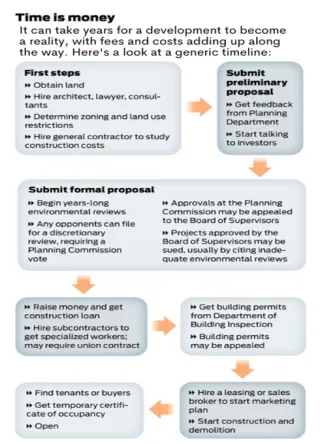
How does the housing crisis affect housing costs?
A large and growing academic literature reveals that lack of housing directly causes high housing costs.
A 2016 report from the Obama White House described the problem of high housing costs:
In just the last 10 years, the number of very low-income renters paying more than half their income for rent has increased by almost 2.5 million households, to 7.7 million nationwide, in part because barriers to housing development are limiting housing supply. Since 1960, the share of renters paying more than 30 percent of their income for rent has more than doubled from 24 percent to 49 percent. And over that time, real household income increased by 18 percent, but inflation adjusted rents rose by 64 percent.
The White House continued, citing three academic sources:
Barriers to housing development are exacerbating the housing affordability crisis, particularly in vibrant regions with high job growth and few rental vacancies.
A 2019 study from the Upjohn Institute found that:...
new construction reduces demand and loosens the housing market in low- and middle-income areas, even in the short run.
A 2019 NYU study found that
new housing development reduced rents in the immediate vicinity, even as it also attracted new restaurants. Specifically:...for every 10% increase in the housing stock, rents decrease 1% and sales prices also decrease within 500 feet…Opposing such development may exacerbate the housing affordability crisis and increase housing cost burdens for local renters.
A 2018 Northwestern study also found that:
...on average and in the short-run — new construction lowers rents in gentrifying neighborhoods.
How does the housing crisis affect the economy?
The housing market is closely linked to consumer spending. When house prices go up, homeowners become better off and feel more confident. Some people will borrow more against the value of their home, either to spend on goods and services, renovate their house, supplement their pension, or pay off other debt. Rising house prices can also redistribute wealth within an economy – increasing the wealth of homeowners (primarily older people), but reducing effective living standards for those who do not own a house (often the young)
When house prices go down, homeowners risk that their house will be worth less than their outstanding mortgage. People are therefore more likely to cut down on spending and hold off from making personal investments. A sharp drop in house prices adversely affects consumer confidence, construction and leads to lower economic growth. (falling house prices can contribute to economic recession)
How does the housing crisis affect poverty?
Homelessness in the United States is the most visible and jarring expression of housing insecurity, yet millions of people across the nation live in unstable housing conditions. These financially insecure people and families must often double or triple up with other people in housing designed for single families or single people. Many are living in their cars, outside encampments, or in temporary shelters. And many more are just one paycheck or one emergency away from losing their apartment or home.The answer to homelessness is housing. The answer to unaffordable housing is to make housing affordable through rent control, debt relief, and living wages.
How does the housing crisis affect homelessness?
The causes of homelessness are complex.
The most common reason for homelessness is a lack of affordable housing. When people cannot afford to pay their rent or mortgage, their options for shelter are dramatically limited, especially if they are unemployed. It’s no secret that the cost of housing has been on the rise for years, and this is especially true in major cities. There is a limited supply of affordable housing in these cities, and homeless people are not the only ones who compete for it. Even families with some income can find themselves struggling to afford a place to live.
Poverty is also a significant contributor to homelessness. People living in poverty are often unable to make ends meet, especially when faced with additional expenses such as illness or job loss. In many cases, people living in poverty find themselves in a downward spiral, unable to afford basic necessities like food and shelter.
There is abundant evidence about the health consequences of homelessness. At a fundamental level, the homeless have higher premature mortality than those who are appropriately housed, with injuries, unintentional overdose, and extreme weather events being important drivers of this mortality. The homeless also have poor quality of life, characterized, as noted in various studies, by chronic pain associated with poor sleeping conditions and limited access to medications and other salutary resources. Skin and foot problems, dental problems, and chronic infectious diseases are also well-described among homeless populations.
Homelessness is overwhelmingly coincident with socioeconomic vulnerability and with poor behavioral health, both mental illness and substance use, which leads to the approach we might consider taking to mitigate the consequences of homelessness.
How does the housing crisis affect local businesses?
High Housing Costs Worsen Traffic
Traffic is often cited as a reason not to build housing. Add more residents to an area, the logic goes, and you put more cars on the road. But there's evidence that not building housing can make traffic worse. When people can't afford to live near jobs, they move somewhere cheaper and drive to work.
Employers Need Workers At All Wage Levels
High housing costs are a major problem for employers — from the federal government to your local hardware store.
Both the public and private sectors rely on low-wage work. Fortune 500 companies and federal agencies employ low-paid contract workers like security guards and maintenance teams. Retailers need cashiers and restaurants need servers. The fast-growing hospitality industry depends on line cooks, room cleaners and bellhops.
Cost-burdened People Buy Less Stuff
Consumer spending accounts for about two-thirds of economic activity in the U.S. That's another reason a lack of affordable housing can hurt local businesses and the regional economy.

How does the housing crisis affect public health?
Housing is a social determinant of health (see image for Dr Tiny's view of housing affects health). A safe house away from potential hazards can promote well-being. However, living in unsafe or unsuitable housing conditions may contribute to health inequities and be a factor in health problems, such as chronic diseases ie hypertension ,asthma. A healthy home needs to have sound structure, to be free of hazards, to provide adequate facilities for sleeping, personal hygiene, the preparation and storage of food, to be an environment for comfortable relaxation, for privacy and quiet, and to provide the facility for social exchange with friends, family and others. The local environment is also important in determining such factors as fear of crime, access to local services and facilities and in promoting social interaction.
In the midst of pandemics ie COVID, it is critical that families have a home in which to shelter to prevent further spread of this dangerous virus. Associated stress from increased rents and lack of stability can cause depression, anxiety, and schizophrenia.
Homeless individuals also overuse emergency services, leading to higher treatment costs. Numerous evidence-based strategies are being employed to end homelessness by increasing access to housing options and supportive services for housing stability.
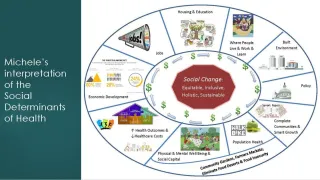
How does the housing crisis affect the crime rate?
When people are homeless, they are more likely to interact with the justice system because they are forced to live outside, which can result in citations or arrests for low-level offenses like loitering or sleeping in parks. And people currently or previously involved in the justice system, who are often disconnected from supports and face housing and job discrimination, are more likely to experience homelessness.
Researchers found that closing large public housing developments and dispersing former residents throughout a wider portion of the city was associated with net reductions in violent crime, at the city level
Is my donation safe?
Yes, we use industry-standard SSL technology to keep your information secure. We partner with Stripe, the industry's established payment processor trusted by some of the world's largest companies. Your sensitive financial information never touches our servers. We send all data directly to Stripe's PCI-compliant servers through SSL.
Can I cancel my recurring donation?
Of course. You can cancel it any time by clicking the link in your donation receipt and following the instructions provided.
Are there other ways to give?
If giving online isn’t right for you, we have many other options for ways to give. Please contact [email protected]
what other questions do you have?
xxxxx
xxxx
Your Paragraph text goes here
© YIMBYDelaware.COM | ALL RIGHTS RESERVED |

